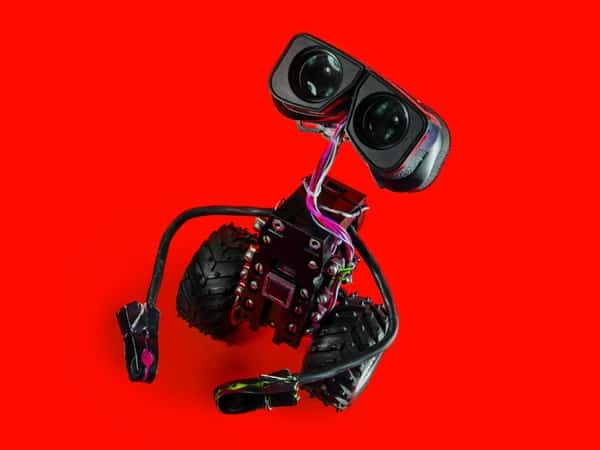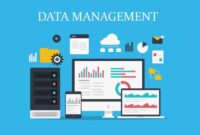Experts interviewed by The New Stack portal talk about how to build a career in IT in 2024.
Generative AI: Start Experimenting – Now
In 2024, the tech world will continue to grapple with questions about how best to invest time in generative AI (GenAI), a technology that is promising but still not a panacea.
“How seriously should we take this? asks Tracey Miranda, a freelance tech lead specializing in Open Source. — Should we retrain ourselves to participate in these ecosystems? Or is it just another bubble that will come and go, leaving nothing behind?”
On the other hand, if you are Gergely Orosz, author of The Pragmatic Engineer newsletter, then not playing with GenAI is simply not pragmatic. “Waiting is not very wise. It’s smart to experiment with these tools to see how they can make you more efficient right now,” he says, pointing not only to the more widely known ChatGPT but also Sourcegraph’s AI coding assistant Cody as promising AI tools for improving productivity.
There’s a need to experiment, he says, “seeing if we can integrate some of these AI assistants into the workflow to take some of the repetitive stuff off the table or get up to speed on new technologies.”
While GenAI use cases are still in their infancy, they are becoming more numerous and will accelerate in 2024. So, Orosz says, it’s not a matter of whether it works, but how it works for you. .
“Don’t be fooled into thinking that the GenAI revolution is still a long way off. Just try it. If it doesn’t suit you, fine. But the reality is that there is a younger generation of seniors coming into the industry, and they live for it,” he says. — It seems to me that AI tools really make you more productive. And the senior engineers who refuse to use them on principle or whatever will, in a few years, fall behind the new generation, who are simply more productive, work faster and, for the most part, with the same quality.”
Choose the Right Open Source Community
Regardless of the results of GenAI’s experiments, it will still dominate conversations in the tech industry in 2024. That’s why tech workers will want to get involved, not just as users, but as creators.
It makes sense that the number of searches for “Open Source GenAI” in Google Trends has at least tripled, since open source is a generally accepted, free path to experimentation.
“The big question about Open Source is what direction it will go and what communities you will participate in,” Miranda says.
She notes that the GenAI movement is still so young that it is difficult to distinguish the signal from the noise in this sudden onslaught of open source GenAI communities: “People will be looking for real communities where they can participate, where they can build, collaborate and be… truly innovative.”
In her opinion, the first community that stands out with this Open Source spirit is AI Tinkerers, which has launched a series of meetups in 21 cities in seven countries dedicated, as its website states, to “pushing the boundaries of large language models (LLMs) and GenAI.”
This community strives to create a safe place to learn and share experiences together, which is one of the core values of Open Source. “What’s attractive about this group is that it’s focused on people coming and showing off their projects, showcasing what you’re building, but not bringing your startups and products here,” Miranda says.
She also knows that the popular LLM framework LangChain has a very vibrant, active and supportive Open Source community.
But all this is still very small compared to the number of open source GenAI projects that have appeared over the past year or so. How can we recognize the signals of a more inclusive and diverse community, whether in AI or more established trends?
A code of conduct that outlines how to follow it is an important sign of a safe community. Miranda also recommends paying attention to the manual. It’s worth looking for clear signs of diversity, or at least evidence that diversity, equity, and inclusion are community priorities and reflected in the group’s actions. To give you an idea, the share of male Open Source contributors is still around 95%.
“I think Open Source is still a very good way to learn quickly and get access to really good developers,” Miranda says, but she recommends being careful when choosing a community. “A community may have a better chance of long-term survival if it is created within a foundation—as opposed to a community created by a venture-backed startup that may or may not stay there long term.”
Constantly improve
Want to secure your future in this volatile job market? Want to be able to adapt to changing technologies like GenAI? Problem solving will continue to be an in-demand skill in 2024. And now, more than ever, you need to be curious and open to these rapid changes.
“Software developers are naturally curious and solution-oriented people, so continuous learning has always been a given,” says Louise Ogilvie, recruitment director at Develocity. “In 2024, I think employers will be looking for those who are committed to keeping up with industry trends and are willing to adapt to take advantage of them, and this will be a key skill they look for in the hiring process.”
Staying up to date isn’t just about reading the news or your favorite tech blog. In this industry, it’s not just what you know, but who you know. “More than ever, networking will play a critical role in staying informed about industry trends and finding new opportunities,” says Michelle Buckels, program director at G2i, a platform for remote engineering jobs.
You don’t have to be fluent in all the shiny new tools or even try them, but you should be aware of them and how you can use them to solve problems and collaborate in the future. “This includes understanding how new developments in AI can be applied to current work for analytics, decision making and automation,” Ogilvy says. “In addition, technology professionals, including managers and leaders, must have the flexibility and ability to move from one specialty to another and embrace new technologies that are becoming critical to success.”
When things change so quickly, you can no longer afford to even appear immune to new technologies. But you also can’t be prepared to just embrace all that glitters. A human, critical perspective is more important now than ever. This is especially true in AI, according to Orosz, where there is a need to be aware of the limitations and why LLMs are still hallucinating.
“I think in the future there will be a greater emphasis on the ethical and responsible use of technology,” Ogilvy says. “Those working in technology will be expected to be aware of and engage in discussions about data privacy, the ethics of AI and the broader impact of technology on society.”
And these discussions are likely to happen in tech job interviews—and if they don’t happen, it could be a red flag that your potential employer is behind the times.
Just don’t strive to work and study non-stop, risking your mental and physical health. Burnout is still common in software engineering. “Our industry has always valued problem solving, so sharpen your communication and problem-solving skills,” says Bakels. “But it’s equally important to prioritize your mental health; Learning to balance work and the roles we value most – like being a parent or partner – is vital to maintaining a career, especially in uncertain times.”
Returning to the office? Not so fast
Remote work in the tech industry has literally saved the world during the coronavirus pandemic. However, in the last couple of years, tech companies have been trying to get their reluctant employees to return to the office. In December 2023, Amazon fired a bunch of senior employees after they read an internal memo warning that people who didn’t work in the office three days a week wouldn’t be promoted.
It looks like this battle between office and remote work will continue in 2024 for many organizations.
And it’s not just about flexibility in choosing where to work. As budgets remain tight and many companies freeze hiring, labor agreements will change.
“We’ll see more attempts to blur the lines between full-time, freelancing, part-time and agency services,” says Gabe Greenberg, CEO of G2i. — 2023rd has identified companies’ need for a more flexible workforce so they can attract specific skills for mission-critical projects or temporary roles without the cost of maintaining a full-time employee.”
This combination of project work and outsourcing allows companies to hire the right people from different regions for as long as they need—or can afford. It’s also a way to bring in someone who can specialize in a new technology to help upskill the team.
Full stack developers are back
Economic turmoil is not conducive to sustainability in the technology sector, including staffing, leaving smaller teams with more work to do.
“I feel like we’re going to see a lot less growth, and it’s going to be important to figure out how to be more productive,” Orosz says. “More companies are predicted to move away from quick hires and rely on smaller teams, which may even get smaller. And more engineers will start using multiple technologies at the same time.”
In fact, he’s already seeing the return of full-stack developers—those who can work on both front- and back-end—at some companies, and predicts the trend will accelerate in 2024 as teams shrink and technology the stack continues to scale.
As an example, he cited one company that has been using the full stack for both creating and maintaining software for many years. Most roles are still clearly skewed toward frontend or backend, but “it’s rare that an engineer does just backend, frontend, or data. More often than not, new employees take on the work that their team needs.”
This doesn’t mean you have to specialize in both. But as tools make it easier to work with the full stack, Orosz believes that in 2024, businesses will be under more pressure to hire one engineer instead of two.
“So if you start to improve as a backend engineer by doing a little frontend, or as a frontend engineer by doing a little backend, it will give you a professional advantage,” he predicts. “It’s actually surprisingly easy to learn how to do this using AI tools.” Or ask GenAI to explain frontend or backend coding to you.”
This is another example of how, while companies will expect more from their teams in 2024, the surest way to build a career in technology is to focus on flexibility and continuous learning.
As Orosz says, “Changes in technology happen all the time, and it’s important to understand which changes you can use to your advantage.”





